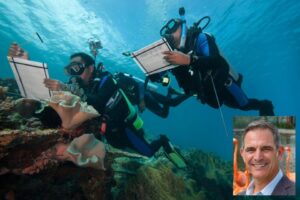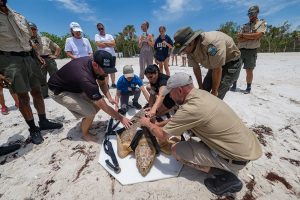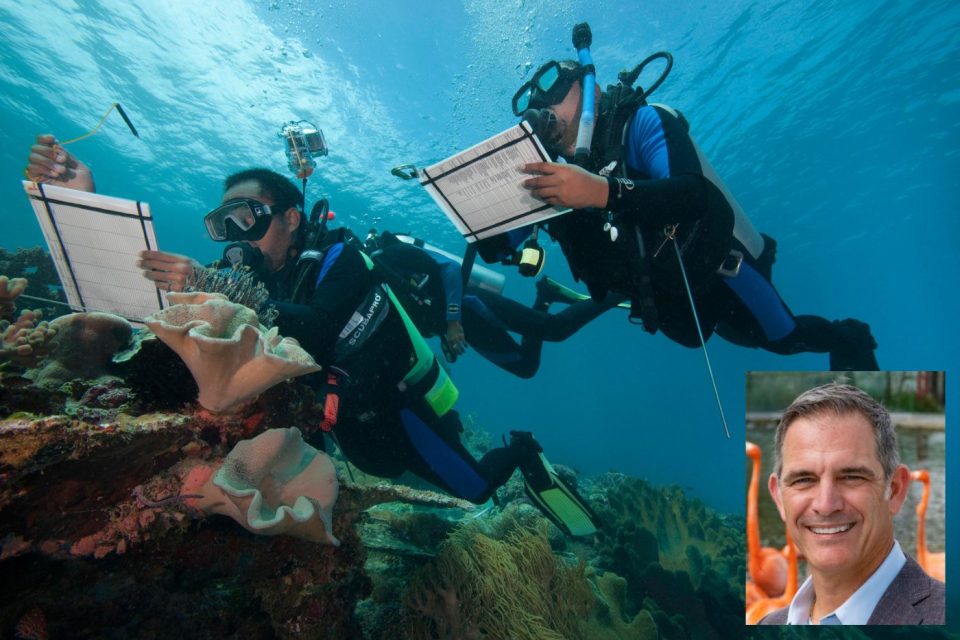
The 305 (ok, ok, and the 954) sit at a unique intersection of ecological urgency and entrepreneurial energy. Surrounded by fragile ecosystems—the Everglades to the west, coral reefs and seagrass meadows along Biscayne Bay and the Keys, and one of the world’s most dynamic metro areas in Miami–Fort Lauderdale—the region is both frontline and proving ground. Here, conservation isn’t only a moral imperative—it’s a market opportunity. Startups, researchers, and mission-driven institutions are building a new playbook where technology underwrites ecological health and economic resilience at the same time.
________________________________________
Why South Florida?
Geography as destiny. Few U.S. regions compress so many climate and biodiversity challenges into such a small area: sea-level rise, saltwater intrusion, stronger storms, coral disease, and mangrove loss. Not to mention being a mecca for invasive species. This concentration of risk makes South Florida a natural lab for solutions in coastal protection, resilient infrastructure, and restoration technology.
A rising tech corridor. Miami’s tech scene has matured from buzz to backbone, with founders and investors increasingly focused on climate, ocean, and hard tech. Combined with scientific institutions like the University of Miami’s Rosenstiel School, FIU’s Institute of Environment, Frost Science, Fairchild Garden, and conservation leaders such as Zoo Miami, the region offers an unusually tight feedback loop from research to real-world pilots.
Civic urgency. Flooded streets, fish kills, and coral bleaching have made resilience a household issue. Mayor Daniella Levine Cava’s climate initiatives; A resilient & Sustainable Environment (Resilience & Climate Action: Promises Kept, Progress Made) and Protecting our Bay & Water Resources (Protected Waters: Promises Kept, Progress Made) are now part of South Florida’s economic identity.
________________________________________
Five Areas Where Tech Meets Conservation
1) The Blue Carbon Toolkit
Mangroves, seagrass, and salt marshes store vast amounts of carbon while buffering coasts. Startups use drones, satellites, and machine learning to measure these benefits, linking restoration to carbon markets and turning shoreline projects into investable assets. Biscayne Bay and Miami-Dade’s canal banks could be key blue carbon zones—if permitting aligns with finance.
2) Coral & Reef Tech
Coral restoration is moving from artisanal to industrial. Micro-fragmentation, 3D-printed reef structures, submersible drones expediting coral planting, and cloud platforms tracking coral survivorship and genetics. South Florida can pilot end-to-end systems—from hatchery to reef—with data-driven outcomes and contracts tied to ecological performance.
3) Water Intelligence & Urban Hydrology
Networked sensors and predictive models can reinvent stormwater and canal systems. Digital twins, smart valves, and real-time analytics detect nutrient spikes and algal blooms before they spread. The region’s complex water management system makes it an ideal test bed for AI-driven hydrology.
4) Biodiversity Data: From Zoo to Zone
Camera traps, acoustic monitoring, and eDNA sampling generate torrents of biodiversity data. Platforms that merge zoo, park, and citizen science data could guide habitat and land-use decisions. Zoo Miami, for instance, can bridge animal care and wild recovery while turning public engagement into research-grade data.
5) Climate-Resilient Infrastructure as an Asset Class
Nature-based solutions—mangrove buffers, dunes, urban canopies—can be financed like traditional infrastructure when benefits like shade, tourism, and property value are quantified. Fintech firms are packaging these projects into resilience portfolios tied to insurance and risk reduction.

________________________________________
How Founders Can Win Here
Build with practitioners. Pair engineers with ecologists and public works teams early; field-tested beats pitch-deck-ready.
Design for messy data. Environmental datasets are patchy—embrace human-in-the-loop and uncertainty modeling.
Monetize co-benefits. Don’t sell only “doing the right thing.” Link revenue to carbon credits, avoided losses, and ESG outcomes. If there’s no margin, there’s no mission!
Think ecosystem, not hero product. The best solutions integrate hardware, software, and finance.unique
Pilot locally, export globally. What works in Miami will work in the Caribbean, Gulf, and beyond.
________________________________________
The Role of Nonprofit Foundations
Nonprofit foundations and community-based organizations are what bring this conservation innovation ecosystem together. They provide early-stage funding, convene diverse partners, and translate complex science into civic action. Foundations can de-risk pilot projects, bridge government and private sector interests, and anchor long-term public trust. By offering seed capital, hosting living labs, and training the local workforce, they ensure that technology adoption supports both ecological outcomes and social equity. Their role as stewards of mission, measurement, and transparency keeps the movement grounded in purpose as capital flows into the space.
________________________________________
A New Story for The 305, and yes, The 954!
South Florida can define a new growth narrative—one where prosperity depends on protecting the ecosystems that make this place so unique. Our conservation challenges aren’t liabilities; they’re the mother of invention. If we align capital with credible science, empower place-based institutions, and measure what matters, South Florida can become the world’s hub for conservation technology.
A rising tide lifts all boats.
Connect To Your Customers & Grow Your Business


